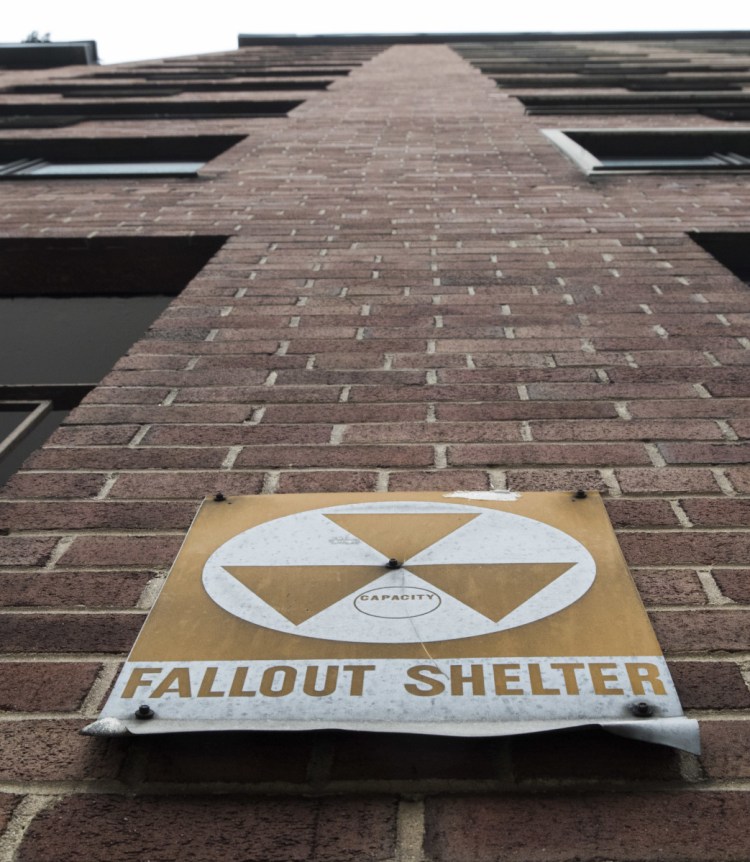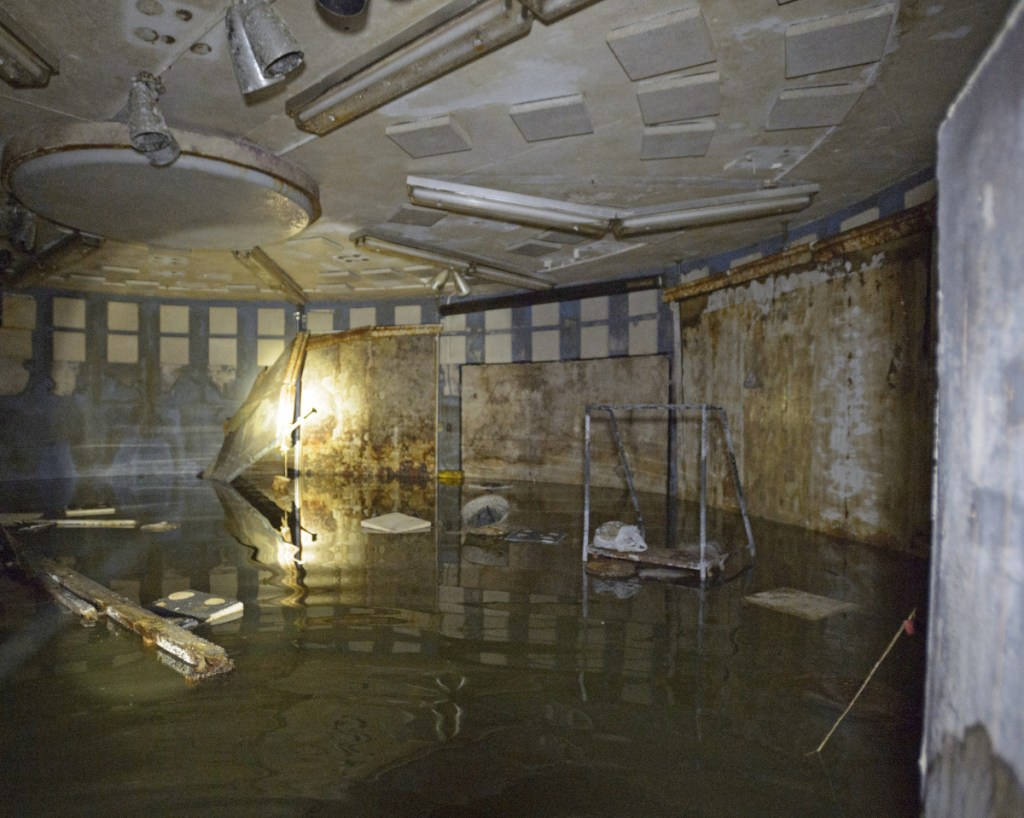NEW YORK — A generation of Americans knew just what to do in the event of a nuclear attack — or during a major false alarm, like the one over the weekend in Hawaii. Take cover in a building bearing a yellow fallout shelter symbol.
But these days, that might not be the best option, or even an option at all.
Relics from the Cold War, the aging shelters that once numbered in the thousands in schools, courthouses and churches, haven’t been maintained. And conventional wisdom has changed about whether such a shelter system is necessary in an age when an attack is more likely to come from a weak rogue state or terrorist group rather than a superpower.
“We’re not in a Cold War scenario. We are in 2018,” said Dr. Irwin Redlener, head of the National Center for Disaster Preparedness at Columbia University’s Earth Institute. “We’re not facing what we were facing 50 years ago, when the Soviet Union and the U.S. had nuclear warheads pointed at each other that would devastate the world. There’s a threat, but it’s a different type of threat today.”
People weren’t sure what to do Saturday when Hawaii mistakenly sent a cellphone alert warning of an incoming missile and didn’t retract it for 38 minutes. The state had set up the missile warning infrastructure after North Korea demonstrated that its missiles had the range to reach the islands. Drivers abandoned cars on a highway and took shelter in a tunnel. Parents huddled in bathtubs with their children. Students bolted across the University of Hawaii campus to take cover in buildings.
The false alarm is the time to talk about what to do in such an emergency, Redlener said, because most of the time people don’t want to talk about it.
“But it’s a real possibility,” he said. “City officials should be talking about what their citizens should do if an attack happened. And it’s a necessity for individuals and families to talk about and develop their own plan of what they would do.”
New Yorkers who were asked this week about where they would seek shelter during a missile attack said they had no idea.
“The only thing I can think is, I would run,” said Sabrina Shephard, 45, of Manhattan.
The fallout shelters, marked with metal signs featuring the symbol for radiation – three joined triangles inside a circle – were set up in tens of thousands of buildings nationwide in the early 1960s amid the nuclear arms race.
The locations were chosen because they could best block radioactive material. Anything could be a shelter as long as it was built with concrete, cinder blocks or brick, had no windows, and could be retrofitted quickly with supplies, an air filtration system and potable water.
But the idea was controversial from the start, especially since one of the scenarios at the time, a full-scale nuclear war between the U.S. and the Soviet Union, would have left few survivors. By the 1970s, the concept was abandoned. A FEMA spokeswoman said it doesn’t have current data on where shelters are.
In Minot, North Dakota, just a few miles from the base where dozens of U.S. missiles are at the ready, a few fallout shelter signs remain, but their status as viable refuges isn’t known.
So what should you do if there is a nuclear attack now?
The good news: You may actually survive, because a nuclear attack today is more likely to be just one bomb — perhaps a small device, smuggled into a city inside a truck, or a single missile lobbed by North Korea that actually makes it across the water. The bad news: You have between 15 and 20 minutes to get to a safe space.
Subterranean subway stations might be a good place to shelter if you happen to be in one when an attack happens, but experts say tunnels could also be dangerous if they are structurally compromised by a blast.
Copy the Story LinkSend questions/comments to the editors.




Success. Please wait for the page to reload. If the page does not reload within 5 seconds, please refresh the page.
Enter your email and password to access comments.
Hi, to comment on stories you must . This profile is in addition to your subscription and website login.
Already have a commenting profile? .
Invalid username/password.
Please check your email to confirm and complete your registration.
Only subscribers are eligible to post comments. Please subscribe or login first for digital access. Here’s why.
Use the form below to reset your password. When you've submitted your account email, we will send an email with a reset code.